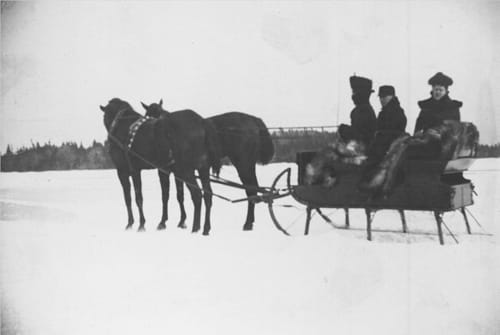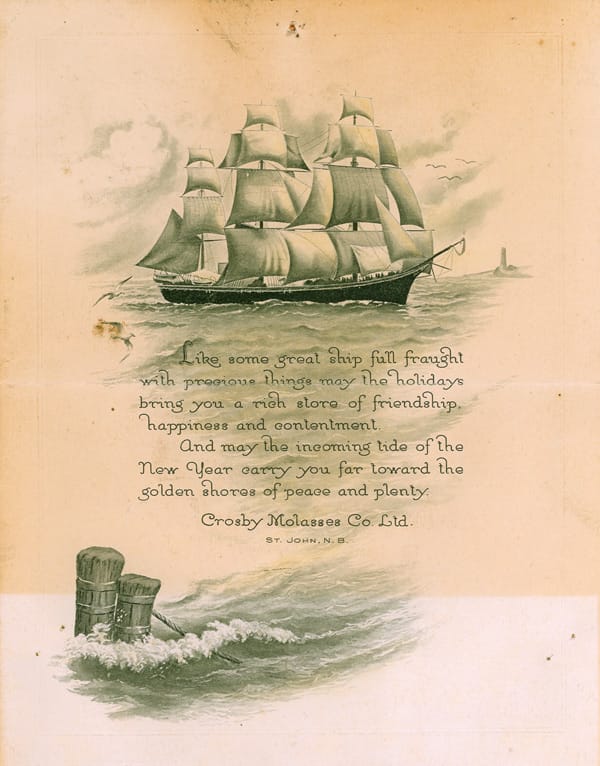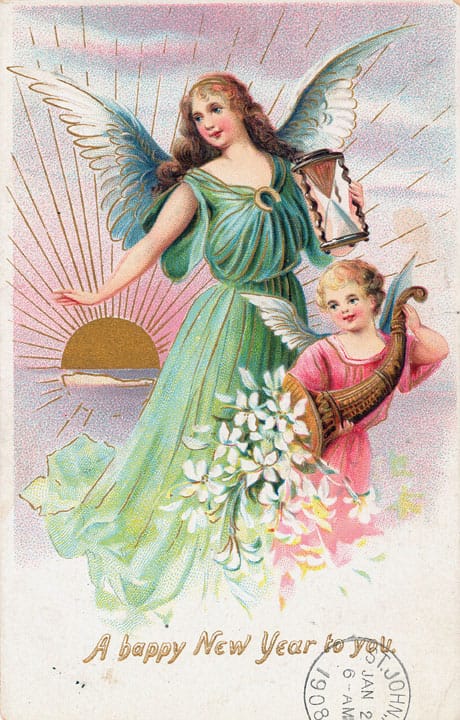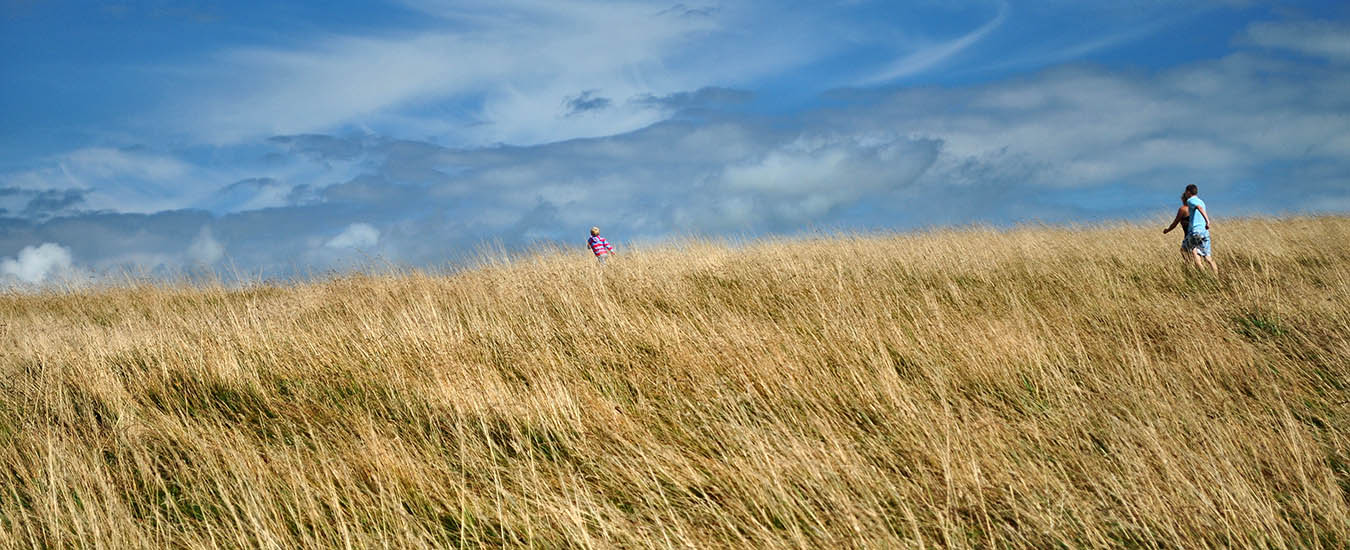New Year's 100 years ago began with the tried and true, along with something titillating and new.
New Year's activities have changed to some degree during the past 100 or so years, though not so much as we might expect. Newspapers provide a good idea of the sorts of activities that marked the occasion; in the first decade of the 20th century, socializing and skating, concerts and church appeared popular, along with a few temperance marches thrown in for good measure.
The levees held by mayors, lieutenant-governors and bishops of both the Roman Catholic and Anglican persuasions would be familiar to us. Halifax, for example, has been known for such occasions almost since its founding, in 1749. St. John's, NL, also took levees seriously. In 1907, news-paper coverage in the Evening Telegram listed each of the 400 people who visited Government House, the Bishop's Court and the Episcopal Palace. That same paper and the St. John's Daily News also provided extensive coverage of the temperance and fraternal societies' parades to those locations.

The News carried a pre-holiday notice that read: "Be sober and Watch. The Members of the St. John's Total Abstinence and Benefit Society are requested to meet on New Year's morning, January 1st, 1908, at 8:30 o'clock for the purpose of attending Mass and holding its Annual Procession. A large attendance is particularly requested. By order, George J. Conghlan, Sect'y."
It was the 49th such parade for the society, led by two bands to Government House, where they were met by His Excellency Governor MacGregor. The governor also welcomed the Newfoundland British Society's marchers, offering them congratulations on their turnout. They followed the visit with "divine service" at St. Mary's Church, Southside.
There were many reports of Watch Night Services at community churches, all well attended.
Sporting events such as curling matches, indoor and outdoor skating, sleighing, horse racing and tobogganing were also common occupations. Charlottetown residents skated at the "big Arena rink," where the "Fourth Regiment Band music was much enjoyed." A snowstorm provided the opportunity for sleighing, and "Great George Street was a favourite speedway during the afternoon."
 In Saint John, NB, when ice hadn't frozen at the Thistle Rink, members sleighed miles to curl on Howes Lake, adjacent to Rockwood Park. Hundreds of skaters were on Lily Lake in the park itself and, when tired of their whirl on the ice, they rested by "a cheery fire in the big open fireplace" in the ornate lakeside pavilion. In 1907 a court battle settled the question of who had rights to Rockwood Park's ice-the ice cutters, because of course no one had freezers, or the skaters. The skaters won.
In Saint John, NB, when ice hadn't frozen at the Thistle Rink, members sleighed miles to curl on Howes Lake, adjacent to Rockwood Park. Hundreds of skaters were on Lily Lake in the park itself and, when tired of their whirl on the ice, they rested by "a cheery fire in the big open fireplace" in the ornate lakeside pavilion. In 1907 a court battle settled the question of who had rights to Rockwood Park's ice-the ice cutters, because of course no one had freezers, or the skaters. The skaters won.
Christie's Pond was the chief attraction in Amherst, NS: "its glassy surface was covered with hundreds of enthusiastic skaters." From the sticks left behind, the Amherst Daily News noted, there must be "a small army of lads preparing to win enduring fame as amateur hockeyists."
The Digby Weekly Courier advised readers to not forget the horse racing on Daley's Lake on New Year's Day, assuming "the ice permits."
People also attended indoor leisure events. Sydney's YMCA staged a New Year's Eve concert where "vocal and instrumental music and reading" were enjoyed by an enthusiastic audience. The St. John's Evening Telegram reported that Augustin Daly's play "Under the Gaslight," presented at the T.A. Hall, was a great success. The players "had faithful conceptions of their roles;" J.J. O'Grady, "who knew his lines perfectly," was especially praised.
Charlottetown's Daily Patriot wrote about Kimball and Donovan, celebrated banjo artists, whose "playing last week in this city marked an epoch in musical entertainments," noting the show would be held over after New Year's.
The Digby Weekly Courier noted "a number of guests of Mrs. H.B. Churchill and Mrs. S.E. Ruddock enjoyed dancing and cards at the Pines Hotel on New Year's night."
Some people preferred to relax at home and greet afternoon callers, a Victorian custom that was then dying out, or to enjoy the postcards received-a form of greeting reaching its zenith during this era.
There were pie socials at Charlottetown, a concert by the Carleton Cornet Band in Saint John West, and Salvation Army-sponsored entertainment in Digby.
The Saint John Globe supported a long-standing tradition of carrier boys giving a poetic address to their customers on New Year's Day-it issued a colourful booklet of photos promoting the city, so carriers could give one to customers, thereby encouraging a tip.
 What was new? Moving picture shows. Saint John's Nickle Theatre opened in April 1907, and was thronged with people wanting to see the newest form of entertainment. By New Year's Day 1908, movie theatres had opened in several locations in the region and, for the first time, patrons could enjoy movies to mark the beginning of the year. In Charlottetown, so many were going to five-cent "moving picture shows" that the Hillsboro rink advertised it would "give the people a winter of cheap skating," lowering its price to a nickel.
What was new? Moving picture shows. Saint John's Nickle Theatre opened in April 1907, and was thronged with people wanting to see the newest form of entertainment. By New Year's Day 1908, movie theatres had opened in several locations in the region and, for the first time, patrons could enjoy movies to mark the beginning of the year. In Charlottetown, so many were going to five-cent "moving picture shows" that the Hillsboro rink advertised it would "give the people a winter of cheap skating," lowering its price to a nickel.
"New Year ushered in with mirth and gladness, whistles screamed, bands played," was a typical January 1st headline, in this case from Saint John. One can't help but wonder what this year's newspaper headlines will tell about us-100 years from now.
